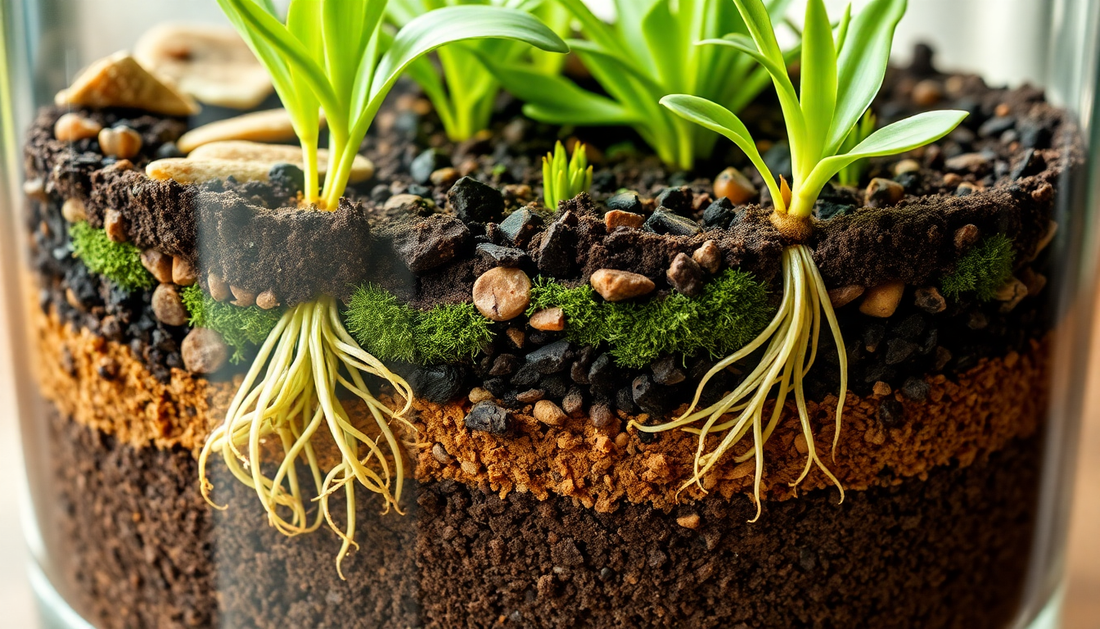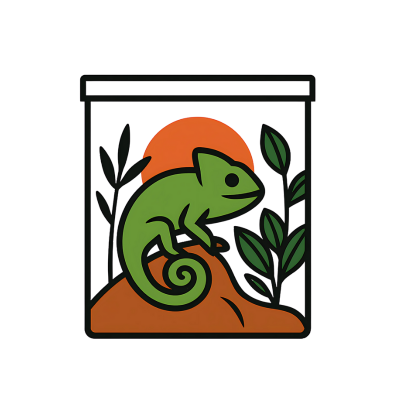
Choosing the Right Substrate for a Thriving Plant Terrarium
Have you just purchased a new terrarium and want to recreate a natural and soothing environment for your reptiles? At LeTerrarium, we know how crucial the choice of substrate is to the success of your project. In this article, we guide you through selecting the ideal substrate for a thriving plant terrarium.
The importance of substrate in a plant terrarium
The substrate is the foundation of your terrarium. It supports your plants, rocks, branches, and, of course, your animals. It plays an essential role in creating a healthy and balanced environment. A good substrate must meet several criteria:
- Moisture retention: it must be able to absorb and release water gradually to maintain an optimal humidity level.
- Ventilation: it must allow good air circulation to avoid mold problems.
- Drainage: Excess water must be able to drain easily to prevent root rot.
- Nutrients: It must contain the nutrients necessary for plant growth.
- Suitable pH: the pH of the substrate must correspond to the needs of the chosen plant species.
The different types of substrates for plant terrariums
There are a wide variety of substrates suitable for plant terrariums. Here are the main ones:
Sphagnum peat moss
Sphagnum peat moss is an excellent choice for terrariums. It has excellent water retention capacity and allows for good aeration of the substrate. It is also rich in natural nutrients. Be careful, however, as its pH is rather acidic, which may be suitable for some plants but not for others.
Coconut fiber
Coconut fiber is an attractive alternative to peat. It has similar water retention and aeration properties. Its pH is more neutral, making it compatible with a wider variety of plants. It also decomposes more slowly than peat.
Potting soil for indoor plants
Indoor plant potting soil is a versatile substrate suitable for many terrarium plant species. It is rich in nutrients and generally pH balanced. Be careful, however, as it can sometimes lack aeration.
The sand
Sand is often used in addition to other substrates to improve drainage and aeration. However, it should not be used in the entire substrate, as this can dry out plants too quickly.
The plant substrate
Some substrates specifically designed for plant terrariums combine several components such as peat, coconut fiber, sand, or even mineral elements. They thus offer an ideal balance for growing plants in terrariums.
Compose your substrate mix
To obtain a substrate perfectly suited to your terrarium, you can create your own mixture. For example:
- 50% sphagnum peat moss
- 30% coconut fiber
- 20% sand
This mix combines the water-retaining qualities of peat, the aeration of coco fiber, and the drainage of sand. You can adjust the proportions according to the specific needs of your plants.
Also feel free to incorporate other elements such as perlite, charcoal or even crushed bark to further improve the structure and properties of the substrate.
Preparing your substrate for a plant terrarium
Once you have chosen your substrate mix, it is important to prepare it properly before installing it in your terrarium.
Moisten the substrate
Start by thoroughly moistening your substrate. You can soak it in water for a few minutes and then drain it. The substrate should be well soaked but not overwatered.
Sterilize the substrate
To avoid any risk of pests or diseases, it is recommended to sterilize your substrate before use. You can do this in an oven at 180°C for 30 minutes or steam for 1 hour.
Add decorative elements
Once the substrate is ready, you can add decorative elements like rocks, dead branches, or moss. This will help recreate a natural and aesthetically pleasing environment for your plants and animals.
Maintaining your plant terrarium substrate
Regular maintenance of your substrate is essential to maintaining a healthy and balanced environment in your terrarium.
Monitor humidity
Regularly check the moisture content of your substrate and adjust watering accordingly. Avoid overwatering, which can promote mold growth.
Renew the substrate
Over time, the substrate decomposes and loses quality. It is therefore necessary to renew it partially or completely every 6 months to 1 year depending on the evolution of your terrarium.
Aerate the substrate
Use a fork or small rake to regularly aerate the surface of the substrate. This allows for better air circulation and prevents soil compaction.
Fertilize if necessary
If you notice a slowdown in the growth of your plants, you can fertilize them with a liquid fertilizer diluted in the watering water.
By following these tips, you'll be able to choose and maintain the ideal substrate for a thriving plant terrarium. Don't hesitate to contact us at LeTerrarium for any questions or additional advice!
